▼ Veteran writer lyricist Javed Akhtar honoured with Hridaynath Mangeshkar award [10-30-17]
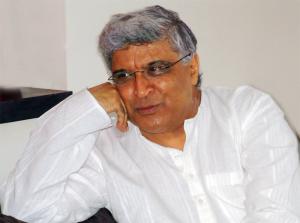 Veteran writer-lyricist Javed Akhtar has been honoured with the Hridaynath Mangeshkar Award.
Akhtar received the honour at an event which marked the 28th anniversary of Hridayesh Arts and the 80th birthday of veteran music composer Hridaynath Mangeshkar.
Akhtar said that receiving the award was one of his highest honours as it comes from the Mangeshkar family.
Akhtar, 72, recalled how Lata Mangeshkar played a pivotal role in his journey as a lyricist.
Hridayesh Arts, in association with Jay Satya Charitable Trust, organised a music programme titled 'Amrut Hriday Swar Lata', presented by Annu Kapoor Films Pvt Ltd to salute and celebrate 75 glorious years of Lata Mangeshkar.
Javed Akhtar: Know More Veteran writer-lyricist Javed Akhtar has been honoured with the Hridaynath Mangeshkar Award.
Akhtar received the honour at an event which marked the 28th anniversary of Hridayesh Arts and the 80th birthday of veteran music composer Hridaynath Mangeshkar.
Akhtar said that receiving the award was one of his highest honours as it comes from the Mangeshkar family.
Akhtar, 72, recalled how Lata Mangeshkar played a pivotal role in his journey as a lyricist.
Hridayesh Arts, in association with Jay Satya Charitable Trust, organised a music programme titled 'Amrut Hriday Swar Lata', presented by Annu Kapoor Films Pvt Ltd to salute and celebrate 75 glorious years of Lata Mangeshkar.
Javed Akhtar: Know More
- Javed Akhtar is an Indian poet, lyricist and screenwriter.
- Akhtar is a mainstream writer and some of his most successful work was carried out with Salim Khan as half of the script-writing duo credited as Salim-Javed between 1971 and 1982.
- Born: 17 January 1945, Gwalior
- Spouse: Shabana Azmi (m. 1984)
- Parents: Jan Nisar Akhtar, Safia Akhtar
|
▼ Jaipur, Srinagar airport top ACI-ASQ Survey [10-23-17]
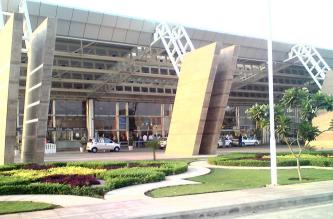 The Jaipur and Srinagar Airport got First and Second rank respectively in the category of 2-5 million passengers in ACI-ASQ Survey.
Dr. Guruprasad Mohapatra, Chairman, Airports Authority of India along with his team received the ACI-ASQ Award at a function held in Mauritius on 17th October 2017.
This is for the second consecutive time that Jaipur Airport has been rated the Best Airport in the World in the traffic volume of 2 to 5 million passengers per year.
Jaipur was ranked as the Best Airport in the World catering to a traffic volume of 2 to 5 million passengers per year in 2016 also.
ACI ASQ: Know More The Jaipur and Srinagar Airport got First and Second rank respectively in the category of 2-5 million passengers in ACI-ASQ Survey.
Dr. Guruprasad Mohapatra, Chairman, Airports Authority of India along with his team received the ACI-ASQ Award at a function held in Mauritius on 17th October 2017.
This is for the second consecutive time that Jaipur Airport has been rated the Best Airport in the World in the traffic volume of 2 to 5 million passengers per year.
Jaipur was ranked as the Best Airport in the World catering to a traffic volume of 2 to 5 million passengers per year in 2016 also.
ACI ASQ: Know More
- The Airport Service Quality (ASQ) Awards are the aviation industry's most prestigious accolades.
- The awards recognize the airports which have achieved the highest passenger satisfaction ratings in the ASQ Survey - the world's benchmark measure of airport excellence.
- It is the only worldwide programme to survey passengers at the airports on their day of travel. Every year, the programme delivers some 600,000 individual surveys in 41 languages in 84 countries.
- It measures passengers' views on 34 key performance indicators, including airport access, check-in, security screening, restrooms, stores and restaurants.
- Each airport uses the exact same survey, creating an industry database that allows airports to compare themselves to other airports around the world.
- The ASQ programme also has a feature that facilitates sharing of best practices among airport operators.
|
▼ TM Krishna wins Indira Gandhi Award for National Integration for 2015-2016 [10-17-17]
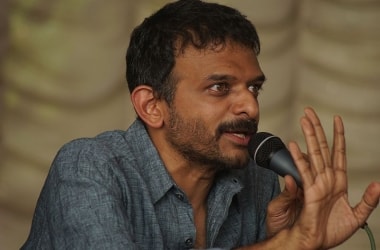 Carnatic vocalist T.M. Krishna will be conferred with the Indira Gandhi Award for National Integration for 2015-16.
The singer, who won the Ramon Magsaysay award for bringing “social inclusiveness in culture” in 2016, will be presented with the honour by Congress president Sonia Gandhi on October 31, Indira Gandhi’s death anniversary.
Mr. Krishna is not only one of the prominent vocalists in the rigorous Carnatic tradition of Indian classical music, but also an activist who has worked on creating egalitarian spaces for music and breaking down caste-barriers in the form.
He was also part of a movement to help the Tamil-dominated and war-ravaged northern province of Sri Lanka rebuild its classical music traditions.
An outspoken columnist, Mr. Krishna, has written and talked on a wide range of socio-political issues, including women’s rights, children’s needs, issues that make a society civil or un-civil, and the dangers of the mentality of war and narrow nationalism.
The Indira Gandhi Award for National Integration was instituted in 1985 by the Congress in its centenary year.
The award is conferred on October 31 for promoting national integration, understanding and fellowship among different communities and cultures of India.
The earlier recipients include spiritual leader Swami Ranganathananda, freedom fighter Aruna Asaf Ali, the Bharat Scouts and Guides, bureaucrat P.N. Haksar, singer M.S. Subbulakshmi, former prime minister Rajiv Gandhi (posthumously) and former presidents A.P.J. Abdul Kalam and Shankar Dayal Sharma (posthumously).
Others winners include the Kasturba Gandhi National Memorial Trust (Indore, Madhya Pradesh), musician A.R. Rahman, Ramakrishna Mission Ashram, Narainpur, Chhattisgarh (jointly), poet Gulzar, scientist M.S. Swaminathan and activist P.V. Rajagopal, besides filmmaker Shyam Benegal and lyricist Javed Akhtar. Carnatic vocalist T.M. Krishna will be conferred with the Indira Gandhi Award for National Integration for 2015-16.
The singer, who won the Ramon Magsaysay award for bringing “social inclusiveness in culture” in 2016, will be presented with the honour by Congress president Sonia Gandhi on October 31, Indira Gandhi’s death anniversary.
Mr. Krishna is not only one of the prominent vocalists in the rigorous Carnatic tradition of Indian classical music, but also an activist who has worked on creating egalitarian spaces for music and breaking down caste-barriers in the form.
He was also part of a movement to help the Tamil-dominated and war-ravaged northern province of Sri Lanka rebuild its classical music traditions.
An outspoken columnist, Mr. Krishna, has written and talked on a wide range of socio-political issues, including women’s rights, children’s needs, issues that make a society civil or un-civil, and the dangers of the mentality of war and narrow nationalism.
The Indira Gandhi Award for National Integration was instituted in 1985 by the Congress in its centenary year.
The award is conferred on October 31 for promoting national integration, understanding and fellowship among different communities and cultures of India.
The earlier recipients include spiritual leader Swami Ranganathananda, freedom fighter Aruna Asaf Ali, the Bharat Scouts and Guides, bureaucrat P.N. Haksar, singer M.S. Subbulakshmi, former prime minister Rajiv Gandhi (posthumously) and former presidents A.P.J. Abdul Kalam and Shankar Dayal Sharma (posthumously).
Others winners include the Kasturba Gandhi National Memorial Trust (Indore, Madhya Pradesh), musician A.R. Rahman, Ramakrishna Mission Ashram, Narainpur, Chhattisgarh (jointly), poet Gulzar, scientist M.S. Swaminathan and activist P.V. Rajagopal, besides filmmaker Shyam Benegal and lyricist Javed Akhtar.
|
▼ Malayalam writer MK Sanu wins Mathrubhumi Literary Award [10-16-17]
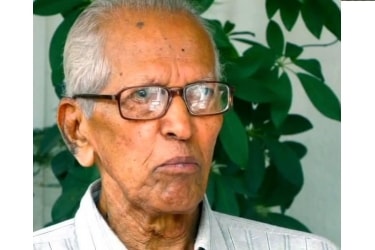 Eminent critic, biographer and orator M K Sanu has been chosen for the Mathrubhumi Literary Award for 2016 in recognition of his rich contribution to the Malayalam literature.
The award carries a cash prize of INR 2 lakh, a citation and statuette.
A jury headed by eminent poet Vishnu Narayanan Namboothiri selected Sanu for the award.
Malayalam writer, literary critic and educationist Dr M Leelavathy, author and scientist C Radhakrishnan were the other members of the jury committee.
"Changampuzha Krishnapilla", "Nakshtrangalude Snehabhajanam", "Narayanaguru Swami", "Mruthyunjayam" "Kavyajeevitham", "Viswasathilek Veendum American Sahityam" and "Prabhatha Darshanam" are some of his important works.
The 89 year-old Sanu is a recipient of several honours, including the Kerala Sahitya Akademi Award, Vayalar Award, Padmaprabha Award, Kendra Sahitya Adademi Award and Kerala Sahitya Akademi Award for his overall contributions. Eminent critic, biographer and orator M K Sanu has been chosen for the Mathrubhumi Literary Award for 2016 in recognition of his rich contribution to the Malayalam literature.
The award carries a cash prize of INR 2 lakh, a citation and statuette.
A jury headed by eminent poet Vishnu Narayanan Namboothiri selected Sanu for the award.
Malayalam writer, literary critic and educationist Dr M Leelavathy, author and scientist C Radhakrishnan were the other members of the jury committee.
"Changampuzha Krishnapilla", "Nakshtrangalude Snehabhajanam", "Narayanaguru Swami", "Mruthyunjayam" "Kavyajeevitham", "Viswasathilek Veendum American Sahityam" and "Prabhatha Darshanam" are some of his important works.
The 89 year-old Sanu is a recipient of several honours, including the Kerala Sahitya Akademi Award, Vayalar Award, Padmaprabha Award, Kendra Sahitya Adademi Award and Kerala Sahitya Akademi Award for his overall contributions.
|
▼ Vayoshreshta Samman awards announced [10-10-17]
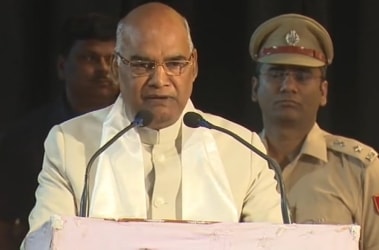 The President of India Shri Ram Nath Kovind conferred the “Vayoshreshtha Samman” to eminent senior citizens and institutions in recognition of their services towards the cause of elderly persons.
There is a healthy tradition of respecting and taking care of elders in our country.
According to the last census, the population of senior citizens in our country was approximately 10.5 crore, which was about 8.5% of our total population.
The average life expectancy has increased in recent decades due to improvement in health services and other reasons.
It is estimated that by the year 2050, the number of senior citizens will be approximately 19% of our total population.
National Programme for Healthcare of the Elderly wherein specialised services will be provided for their treatment is operational.
Under the National Health Insurance Scheme implemented with the help of State Governments, additional health insurance is being provided.
National Award ‘Vayoshreshtha Samman’ will help to motivate younger generations to understand the contribution of the elderly persons in building of the society and the nation.
Ministry of Social Justice and Empowerment as the nodal ministry for the cause of senior citizens, has been celebrating the International day of Older Persons since 2005 by conferring Vayoshreshtha Sammans to eminent senior citizens and institutions in recognition of their services towards the cause of elderly persons, especially indigent senior citizens.
In 2013, the Vayoshreshtha Sammans have been upgraded as a “National Award”.
The National Award ‘Vayoshreshtha Samman’ is given in thirteen categories.
The applications had been invited from NGOs, institutions, individuals to apply for the awards in different categories.
This year Ministry of Social Justice and Empowerment honoured 22 awardees under 11 categories
List of awardees for (National Awards) Vayoshrestha Samman 2017 individuals The President of India Shri Ram Nath Kovind conferred the “Vayoshreshtha Samman” to eminent senior citizens and institutions in recognition of their services towards the cause of elderly persons.
There is a healthy tradition of respecting and taking care of elders in our country.
According to the last census, the population of senior citizens in our country was approximately 10.5 crore, which was about 8.5% of our total population.
The average life expectancy has increased in recent decades due to improvement in health services and other reasons.
It is estimated that by the year 2050, the number of senior citizens will be approximately 19% of our total population.
National Programme for Healthcare of the Elderly wherein specialised services will be provided for their treatment is operational.
Under the National Health Insurance Scheme implemented with the help of State Governments, additional health insurance is being provided.
National Award ‘Vayoshreshtha Samman’ will help to motivate younger generations to understand the contribution of the elderly persons in building of the society and the nation.
Ministry of Social Justice and Empowerment as the nodal ministry for the cause of senior citizens, has been celebrating the International day of Older Persons since 2005 by conferring Vayoshreshtha Sammans to eminent senior citizens and institutions in recognition of their services towards the cause of elderly persons, especially indigent senior citizens.
In 2013, the Vayoshreshtha Sammans have been upgraded as a “National Award”.
The National Award ‘Vayoshreshtha Samman’ is given in thirteen categories.
The applications had been invited from NGOs, institutions, individuals to apply for the awards in different categories.
This year Ministry of Social Justice and Empowerment honoured 22 awardees under 11 categories
List of awardees for (National Awards) Vayoshrestha Samman 2017 individuals
| Category |
Name |
|---|
| Centenarian | Sh. Chemanchery Kunhiraman Nair, Kozhikode, Kerala. | | Centenarian | Mrs. Arvinda Vishnukant Dave "Akshat", Vadodara, Gujarat. | | Centenarian | Sh. Thanga Darlong, Kailashahar, Unakoti, Tripura. | | Centenarian | Late Shri Kishan Chand Garg (Posthumous). Received by Dr. V.K. Garg on behalf of his Late father, Saharanpur, Uttar Pradesh. | | Iconic Mother | Smt. Kaushalya Joshi, Jalandhar, Punjab. | | Lifetime Achievement | Dr. Parvatidevi Patil, Gulbarga, Karnataka. | | Lifetime Achievement | Dr. Mahadeorao Jyotiramji Meshram, Nagpur, Maharashtra. | | Creative Art | Shri Yumnam Rajendra Singh, Imphal, Manipur. | | Creative Art | Sh. B.Shankara Rao, Bangalore, Karnataka. | | Creative Art | Shri S. Thippeswamy, Mysuru, Karnataka. | | Creative Art | Smt. Mangal Ramchandra Bansode, Satara, Karawadi, Maharashtra. | | Creative Art | Dr. Dolly Das, Dibrugarh, Assam. | | Sports and Adventure | Sh. G.S. Sandhu, Patiala, Punjab. | | Sports and Adventure | Sh. Yogendra Vaidya, Ahmedabad, Gujarat. | | Sports and Adventure | Mrs. Manorama M. Kulkarni (Female), Kolhapur, Maharshtra. | | Courage and Bravery | Dr. Aabha Verma, Bilaspur, Chhattisgarh. | | Courage and Bravery | Shri Padmashri Shambu Nath Khajuria, Poonch, J&K. | | Best Institution for providing Services to Senior Citizens and Awareness Generation | Varishth Nagrik Kesari Club, Delhi. Received by Ms. Kiran Chopra, Chairperson, Delhi. | | Best District Panchayat in providing Services and Facilities to Senior Citizens | Ujjain (O/o Zila Panchayat). Received by Shri Sandeep G.R., CEO, Zila Panchayat, Ujjain, MP. | | Best Urban Local Body in providing Services and Facilities to Senior Citizens | Nagar Palika, Nagda. Received by Shri Bhavishaya Kumar Khobraghade, Chief Municipal Officer, Municipal Council, Nagda, Madhya Pradesh. | | Best State in implementing the Maintenance and Welfare of Parents and Senior Citizens Act. 2007 and providing Services and Facilities to Senior Citizens | State of Kerala. Received by Shri Biju Prabhakar, Secretary, Dept. of Social Justice, Govt. Secretariat, Trivandrum, Kerala. | | Best Public Sector Organisation in promoting the well being and welfare of Senior Citizens. | Bharat Heavy Electricals Ltd. Received by CMD and General Manager (HR), BHEL. |
|
▼ Nobel prize for economics goes to Richard H Thaler for behavioural economics [10-10-17]
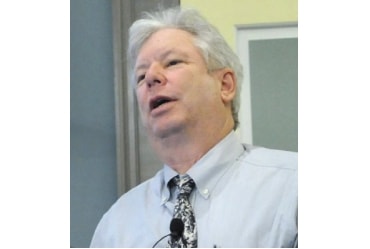 The Sveriges Riksbank Prize in Economic Sciences in Memory of Alfred Nobel 2017 was awarded to Richard H. Thaler ''for his contributions to behavioural economics.''
Dr. Thaler (72) has incorporated psychologically realistic assumptions into analyses of economic decision-making, a media release by Royal Swedish Academy of Sciences said.
By exploring the consequences of limited rationality, social preferences, and lack of self-control, he has shown how these human traits systematically affect individual decisions as well as market outcomes.
Dr. Thaler's contributions have built a bridge between the economic and psychological analyses of individual decision-making.
His empirical findings and theoretical insights have been instrumental in creating the new and rapidly expanding field of behavioural economics, which has had a profound impact on many areas of economic research and policy.
Richard Thaler: Know More The Sveriges Riksbank Prize in Economic Sciences in Memory of Alfred Nobel 2017 was awarded to Richard H. Thaler ''for his contributions to behavioural economics.''
Dr. Thaler (72) has incorporated psychologically realistic assumptions into analyses of economic decision-making, a media release by Royal Swedish Academy of Sciences said.
By exploring the consequences of limited rationality, social preferences, and lack of self-control, he has shown how these human traits systematically affect individual decisions as well as market outcomes.
Dr. Thaler's contributions have built a bridge between the economic and psychological analyses of individual decision-making.
His empirical findings and theoretical insights have been instrumental in creating the new and rapidly expanding field of behavioural economics, which has had a profound impact on many areas of economic research and policy.
Richard Thaler: Know More
- Dr. Thaler is a Professor of Behavioural Science and Economics at University of Chicago Booth School of Business.
- He is the co-author (with Cass R. Sunstein) of the global best seller Nudge (2008) in which the concepts of behavioural economics are used to tackle many of society’s major problems.
- Thaler also supports demonetisation.
Nobel Prize in Economics- The Prize was first awarded in 1969, nearly seven decades after the series of prestigious prizes that Nobel called for.
- Despite its provenance and carefully laborious name, it is broadly considered an equal to the other Nobel and the winner attends the famed presentation banquet.
- The winner will walk away with 9-million-kronor ($1.1-million) prize.
- Last year, Oliver Hart and Bengt Holmström shared the prize for their contributions to contract theory.
- Indian economist Amartya Sen won the Nobel in 1998 for his contributions to welfare economics.
|
▼ British author Kazuo Ishiguro is Nobel Prize Literature Laureate for 2017 [10-9-17]
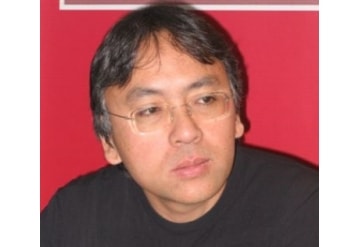 British author Kazuo Ishiguro is Nobel prize literature laureate for 2017
British author Kazuo Ishiguro, best known for his novel The Remains of the Day, has won the Nobel Literature Prize on October 5.
The 62-year-old writer, “in novels of great emotional force, has uncovered the abyss beneath our illusory sense of connection with the world,” the Academy wrote in its citation.
Born in Nagasaki, he moved to Britain with his family when he was five years old, only returning to visit Japan as an adult.
Both his first novel, A Pale View of Hills, from 1982 and the subsequent one, An Artist of the Floating World, from 1986, take place in Nagasaki a few years after World War II.
The themes Ishiguro is most associated with are already present here: memory, time, and self-delusion.
“This is particularly notable in his most renowned novel, The Remains of the Day,” which was turned into a film with Anthony Hopkins acting as the duty-obsessed butler Stevens.
Ishiguro’s writings are marked by a carefully restrained mode of expression, independent of whatever events are taking place.
Apart from his eight books, Mr. Ishiguro has also written scripts for film and television.
The 2016 literature prize went to American songwriter Bob Dylan, and the previous year’s to Belarusian journalist Svetlana Alexievich.
Ms. Danius said the choice of Mr. Ishiguro did not show intention to avoid the controversy sparked by last year’s pick of Mr. Dylan.
The first singer-songwriter to win the prestigious prize, the rock legend didn’t comment on his Nobel for several weeks and then snubbed the formal prize ceremony in Stockholm.
The Academy is known for its cloak-and-dagger methods to prevent any leaks, resorting to code names for authors and fake book covers when reading in public.
Of the 114 laureates honoured since the prize was first awarded to France's Sully Prudhomme in 1901, only 14 are women.
But the Academy insists it doesn't take gender into consideration, nor nationality, language or genre for that matter. British author Kazuo Ishiguro is Nobel prize literature laureate for 2017
British author Kazuo Ishiguro, best known for his novel The Remains of the Day, has won the Nobel Literature Prize on October 5.
The 62-year-old writer, “in novels of great emotional force, has uncovered the abyss beneath our illusory sense of connection with the world,” the Academy wrote in its citation.
Born in Nagasaki, he moved to Britain with his family when he was five years old, only returning to visit Japan as an adult.
Both his first novel, A Pale View of Hills, from 1982 and the subsequent one, An Artist of the Floating World, from 1986, take place in Nagasaki a few years after World War II.
The themes Ishiguro is most associated with are already present here: memory, time, and self-delusion.
“This is particularly notable in his most renowned novel, The Remains of the Day,” which was turned into a film with Anthony Hopkins acting as the duty-obsessed butler Stevens.
Ishiguro’s writings are marked by a carefully restrained mode of expression, independent of whatever events are taking place.
Apart from his eight books, Mr. Ishiguro has also written scripts for film and television.
The 2016 literature prize went to American songwriter Bob Dylan, and the previous year’s to Belarusian journalist Svetlana Alexievich.
Ms. Danius said the choice of Mr. Ishiguro did not show intention to avoid the controversy sparked by last year’s pick of Mr. Dylan.
The first singer-songwriter to win the prestigious prize, the rock legend didn’t comment on his Nobel for several weeks and then snubbed the formal prize ceremony in Stockholm.
The Academy is known for its cloak-and-dagger methods to prevent any leaks, resorting to code names for authors and fake book covers when reading in public.
Of the 114 laureates honoured since the prize was first awarded to France's Sully Prudhomme in 1901, only 14 are women.
But the Academy insists it doesn't take gender into consideration, nor nationality, language or genre for that matter.
|
▼ Nobel Peace Prize goes to anti-nuclear weapons group ICAN [10-9-17]
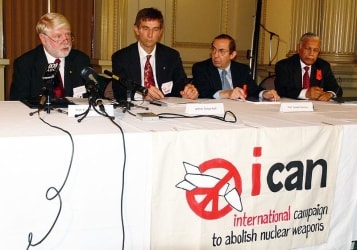 Nuclear disarmament campaign group the International Campaign to Abolish Nuclear Weapons (ICAN) won the Nobel Peace Prize on Oct 6, 2017 for its efforts to rid the world of the atomic bomb.
ICAN is also known for warning that Donald Trump’s presidency showed how dangerous the weapons of mass destruction truly are.
More than 70 years since atomic bombs were used on the Japanese cities of Hiroshima and Nagasaki, the Nobel committee sought to highlight ICAN’s tireless non-proliferation efforts as nuclear-related crises swirl around North Korea and Iran.
The decision sent a strong message at a time when Mr. Trump has threatened to tear up a 2015 deal curbing Iran’s nuclear abilities.
The U.S. President alarmed delegates at the UN General Assembly by warning he may be forced to “totally destroy” North Korea because of its atomic weapons programme.
Founded in Vienna in 2007, ICAN comprises more than 400 NGOs and has mobilised supporters and celebrities alike in its cause.
It was a key player in the adoption of a historic nuclear weapons ban treaty, signed at the UN by 122 countries in July.
However, the accord was largely symbolic as none of the nine known world nuclear powers put their names down. It still needs to be ratified before entering into force.
The U.S., Russia, Britain, France, China, India, Pakistan, Israel and North Korea are all thought to possess weapons of mass destruction.
Although global atomic weapons stockpiles have plummeted - from around 64,000 warheads in 1986 at the height of the Cold War to more than 9,000 in 2017 according to the Bulletin of Atomic Scientists (BAS) - the number of nuclear-armed nations has grown.
Friday’s award - the climax to a week of prize-giving honouring global luminaries in the fields of physics, chemistry, medicine and literature - comes as a global nuclear deal with Iran is under increasing pressure from Mr. Trump.
The agreement struck in 2015 between Iran and world powers drastically curbed Tehran’s nuclear enrichment capability in return for a lifting of punishing economic sanctions.
Iran denies ever pursuing a bomb, insisting its nuclear programme is for peaceful energy production only.
Tensions have also soared between the U.S. and North Korea, which has test-fired two missiles over Japan and conducted a string of apparent underground nuclear tests this year.
EU foreign affairs chief Federica Mogherini also congratulated ICAN.
But Russia, which according to BAS has the world’s largest atomic stockpile, said there was no alternative to “nuclear parity” to guarantee world peace.
Nobel peace prize: Know More Nuclear disarmament campaign group the International Campaign to Abolish Nuclear Weapons (ICAN) won the Nobel Peace Prize on Oct 6, 2017 for its efforts to rid the world of the atomic bomb.
ICAN is also known for warning that Donald Trump’s presidency showed how dangerous the weapons of mass destruction truly are.
More than 70 years since atomic bombs were used on the Japanese cities of Hiroshima and Nagasaki, the Nobel committee sought to highlight ICAN’s tireless non-proliferation efforts as nuclear-related crises swirl around North Korea and Iran.
The decision sent a strong message at a time when Mr. Trump has threatened to tear up a 2015 deal curbing Iran’s nuclear abilities.
The U.S. President alarmed delegates at the UN General Assembly by warning he may be forced to “totally destroy” North Korea because of its atomic weapons programme.
Founded in Vienna in 2007, ICAN comprises more than 400 NGOs and has mobilised supporters and celebrities alike in its cause.
It was a key player in the adoption of a historic nuclear weapons ban treaty, signed at the UN by 122 countries in July.
However, the accord was largely symbolic as none of the nine known world nuclear powers put their names down. It still needs to be ratified before entering into force.
The U.S., Russia, Britain, France, China, India, Pakistan, Israel and North Korea are all thought to possess weapons of mass destruction.
Although global atomic weapons stockpiles have plummeted - from around 64,000 warheads in 1986 at the height of the Cold War to more than 9,000 in 2017 according to the Bulletin of Atomic Scientists (BAS) - the number of nuclear-armed nations has grown.
Friday’s award - the climax to a week of prize-giving honouring global luminaries in the fields of physics, chemistry, medicine and literature - comes as a global nuclear deal with Iran is under increasing pressure from Mr. Trump.
The agreement struck in 2015 between Iran and world powers drastically curbed Tehran’s nuclear enrichment capability in return for a lifting of punishing economic sanctions.
Iran denies ever pursuing a bomb, insisting its nuclear programme is for peaceful energy production only.
Tensions have also soared between the U.S. and North Korea, which has test-fired two missiles over Japan and conducted a string of apparent underground nuclear tests this year.
EU foreign affairs chief Federica Mogherini also congratulated ICAN.
But Russia, which according to BAS has the world’s largest atomic stockpile, said there was no alternative to “nuclear parity” to guarantee world peace.
Nobel peace prize: Know More
- The Nobel committee has rewarded anti-nuclear weapons drives on several previous occasions, handing out the prestigious prize to Soviet dissident Andrei Sakharov in 1975, the international non-proliferation IPPNW group in 1985, and the IAEA’s then head Mohamed El-Baradei 20 years later.
- More than 300 people and organisations were thought to have been nominated for this year’s Peace Prize, including the UN’s refugee agency UNHCR, Syria’s White Helmets rescue service and Congolese doctor Denis Mukwege.
- The Peace Prize, which comes with a gold medal and a cheque for nine million Swedish kronor ($1.1 million) will be presented in Oslo on December 10, the anniversary of the death of its founder, Swedish philanthropist and dynamite inventor Alfred Nobel.
|
▼ MHFW wins Swachchta Pakhwada award [10-5-17]
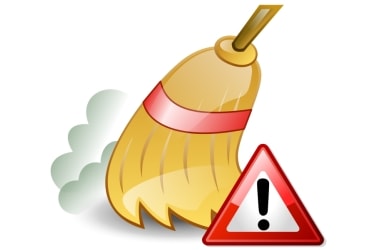 The Ministry of Health and Family Welfare has been adjudged as the best department for its contribution during Swachhta Pakhwada, an inter-Ministry initiative of Swachh Bharat Mission of Ministry of Drinking Water and Sanitation.
The Health Ministry observed the Swachhta Pakhwada from 1st February, 2017 to 15th February, 2017. The award was presented to the Ministry on 2nd October, 2017, the third anniversary of Swachh Bharat Mission.
Swachhta Pakhwada activities were organized and observed within the Ministry offices, in Central Government Hospitals and in public health facilities of the states across 36 States/UTs.
More pertinently, in addition to the envisaged activities, some of the key contributions include mass awareness generation initiatives through rallies, street plays, painting competitions etc., leveraging the participation and support of public representatives, NGOs, school children and the community.
These activities are considered critical for sustaining the swachhta movement.
During the Swacchta fortnight, all hospital/clinics were also directed to install waste bins for segregating waste and massive cleaning drives were undertaken in all the hospital wards and hospital premises.
Doctors, nurses and medical staff along with patients and visitors carried out sensitization drives on the importance of safe sanitation and hygiene.
The Swachhta Pakhwada culminated with inspection and special sanitation drive undertaken by the Minister for Health and Family Welfare Shri J P Nadda on 15th February 2017.
Swachchta Pakhwada: Know More The Ministry of Health and Family Welfare has been adjudged as the best department for its contribution during Swachhta Pakhwada, an inter-Ministry initiative of Swachh Bharat Mission of Ministry of Drinking Water and Sanitation.
The Health Ministry observed the Swachhta Pakhwada from 1st February, 2017 to 15th February, 2017. The award was presented to the Ministry on 2nd October, 2017, the third anniversary of Swachh Bharat Mission.
Swachhta Pakhwada activities were organized and observed within the Ministry offices, in Central Government Hospitals and in public health facilities of the states across 36 States/UTs.
More pertinently, in addition to the envisaged activities, some of the key contributions include mass awareness generation initiatives through rallies, street plays, painting competitions etc., leveraging the participation and support of public representatives, NGOs, school children and the community.
These activities are considered critical for sustaining the swachhta movement.
During the Swacchta fortnight, all hospital/clinics were also directed to install waste bins for segregating waste and massive cleaning drives were undertaken in all the hospital wards and hospital premises.
Doctors, nurses and medical staff along with patients and visitors carried out sensitization drives on the importance of safe sanitation and hygiene.
The Swachhta Pakhwada culminated with inspection and special sanitation drive undertaken by the Minister for Health and Family Welfare Shri J P Nadda on 15th February 2017.
Swachchta Pakhwada: Know More
- Swachhta Pakhwada started in April 2016 with the objective of bringing a fortnight of intense focus on the issues and practices of Swachhta by engaging GOI Ministries/Departments in their jurisdictions.
- An annual calendar is pre-circulated among the Ministries to help them plan for the Pakhwada activities.
- The Ministries observing Swachhta Pakhwada are monitored closely using online monitoring system of Swachhta Samiksha where action plans, images, videos related to Swachhta activities are uploaded and shared.
- For the Pakhwada fortnight, observing ministries are considered as Swachhta Ministries and are expected to bring qualitative Swachhta improvements in their jurisdictions.
|
▼ Nobel prize in Chemistry for atomic building blocks of life [10-5-17]
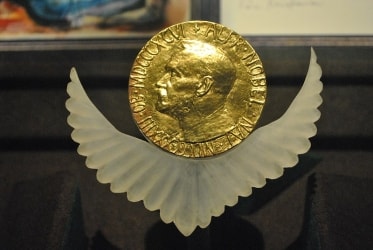 The Nobel Prize for Chemistry rewards researchers for major advances in studying the infinitesimal bits of material that are the building blocks of life.
Recent prizes have gone to scientists who developed molecular “machines” with controllable motions and who mapped how cells repair damaged DNA, leading to improved cancer treatments.
The 2017 prize, worth 9 million kronor ($1.1 million), is being announced on October 4 by the Royal Swedish Academy of Sciences.
Jacques Dubochet, Joachim Frank and Richard Henderson won the 2017 Nobel Prize in Chemistry for developing cryo-electron microscopy, which simplifies and improves the imaging of biomolecules.
This method has moved biochemistry into a new era.
Researchers can now freeze biomolecules mid-movement and visualise processes they have never previously seen, which is decisive for both the basic understanding of life's chemistry and for the development of pharmaceuticals.
Chemistry is the third of this year’s Nobel Prizes
The medicine prize went to three Americans studying circadian rhythms - Jeffrey C. Hall, Michael Rosbash and Michael W. Young.
The physics prize went to Rainer Weiss, Barry Barish and Kip Thorne for detecting gravitational waves.
The literature winner will be named on October 5 and the peace prize will be announced on October 6.
Moving Past Electron Microscopy: Know More The Nobel Prize for Chemistry rewards researchers for major advances in studying the infinitesimal bits of material that are the building blocks of life.
Recent prizes have gone to scientists who developed molecular “machines” with controllable motions and who mapped how cells repair damaged DNA, leading to improved cancer treatments.
The 2017 prize, worth 9 million kronor ($1.1 million), is being announced on October 4 by the Royal Swedish Academy of Sciences.
Jacques Dubochet, Joachim Frank and Richard Henderson won the 2017 Nobel Prize in Chemistry for developing cryo-electron microscopy, which simplifies and improves the imaging of biomolecules.
This method has moved biochemistry into a new era.
Researchers can now freeze biomolecules mid-movement and visualise processes they have never previously seen, which is decisive for both the basic understanding of life's chemistry and for the development of pharmaceuticals.
Chemistry is the third of this year’s Nobel Prizes
The medicine prize went to three Americans studying circadian rhythms - Jeffrey C. Hall, Michael Rosbash and Michael W. Young.
The physics prize went to Rainer Weiss, Barry Barish and Kip Thorne for detecting gravitational waves.
The literature winner will be named on October 5 and the peace prize will be announced on October 6.
Moving Past Electron Microscopy: Know More
- For many years - in the 1970s, the electron microscope was the only way to look into the cell and observe the minute beings that play such an important role in our lives such as viruses.
- However, the powerful beam of the electron microscope would destroy biological material, so it was believed that such microscopy could only reveal images of dead cells and dead organisms.
- Also it was then impossible to view solutions as water would evaporate under the microscope’s vacuum.
- That was until this year’s laureate Richard Henderson came on to the scene.
- Finally, in 1990, 15 years after he had published the first model, Prof. Henderson achieved his goal and was able to present a structure of bacteriorhodopsin at atomic resolution.
Cryo Electron Microscopy- “Cryo”, short for cryogenic refers to very low temperatures.
- Though the actual temperature is not well defined, it is below minus 150°C.
- In the context of electron microscopy, it refers to the fact that the object to be imaged is frozen to such low temperatures to facilitate being studied under the beam of the electron microscope.
- This method is so effective that even in recent times, it has been used to image the elusive Zika virus: When researchers began to suspect that the Zika virus was causing the epidemic of brain-damaged newborns in Brazil, they turned to cryo-EM to visualise the virus.
- Over a few months, three dimensional (3D) images of the virus at atomic resolution were generated and researchers could start searching for potential targets for pharmaceuticals.
Scientific Contributions in This Field- Prof. Frank had long worked to find a solution to just that problem.
- In 1975, he presented a theoretical strategy where the apparently minimal information found in the electron microscope’s two-dimensional images could be merged to generate a high-resolution, three-dimensional whole.
- Between 1975 and 1986, Prof. Frank succeeded in merging two fuzzy images of a molecule to get a three-dimensional image.
- In 1978, Prof. Dubochet was recruited to the European Molecular Biology Laboratory in Heidelberg to solve another of the electron microscope’s basic problems: how biological samples dry out and are damaged when exposed to a vacuum.
- The solution he envisaged was to freeze water rapidly so that instead of solidifying into a crystalline solid, it freezes into a disordered state, which is like a glass.
- Though a glass appears to be solid, it is actually what is called a supercooled liquid in which individual molecules are arranged at random instead of a periodic crystalline solid structure.
Prof. Dubochet realised that if he could freeze the water to form a glassy state, what is known as vitrified water, it would not dry up when excited by the beam.
- In the early 1980s, Prof. Dubochet cooled water so rapidly that it solidified in its liquid form around a biological sample, allowing the biomolecules to retain their natural shape even in a vacuum.
- In 1984, he published the first images of a number of different viruses, round and hexagonal, that are shown in sharp contrast against the background of vitrified water.
|
▼ Gravitational wave LIGO scientists win Nobel prize for Physics [10-4-17]
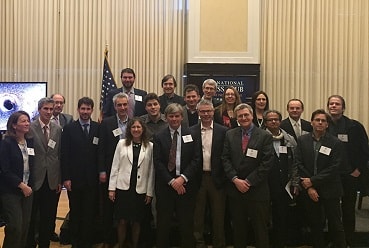 US scientists Rainer Weiss, Barry Barish and Kip Thorne won the 2017 Nobel Prize for Physics for their pioneering role in the detection of gravitational waves.
Ripples in the fabric of space-time first predicted a century ago by Albert Einstein, gravitational waves sparked a revolution in astrophysics when their first detection was announced early last year.
The teams involved in the discovery quickly emerged as favourites for the prize.
They are receiving the prize for the discovery of the gravitational waves released by violent events in the universe such as the mergers of black holes.
The first time this was detected was on September 14, 2015, by the LIGO-VIRGO collaboration. Since then three more detections have been made, the latest one on September 28, 2017.
The discovery is due to an extremely delicate experiment. Gravitational waves were predicted by Einstein almost 100 years ago.
After about 50 years of experimentation the waves were detected for the first time in September 2015.
The 2016 prize went to three British-born researchers who applied the mathematical discipline of topology to help understand the workings of exotic matter such as superconductors and superfluids.
The 2017 Nobel medicine prize went on October 2 to three Americans studying circadian rhythms, better known as body clocks- Jeffrey C. Hall, Michael Rosbash and Michael W. Young.
Physics is the second of this year's crop of Nobel Prizes.
The prizes for achievements in science, literature and peace were first awarded in 1901 in accordance with the will of Swedish business tycoon Alfred Nobel, who bequeathed much of the fortune he generated from his discovery of dynamite.
LIGO Research: Know More US scientists Rainer Weiss, Barry Barish and Kip Thorne won the 2017 Nobel Prize for Physics for their pioneering role in the detection of gravitational waves.
Ripples in the fabric of space-time first predicted a century ago by Albert Einstein, gravitational waves sparked a revolution in astrophysics when their first detection was announced early last year.
The teams involved in the discovery quickly emerged as favourites for the prize.
They are receiving the prize for the discovery of the gravitational waves released by violent events in the universe such as the mergers of black holes.
The first time this was detected was on September 14, 2015, by the LIGO-VIRGO collaboration. Since then three more detections have been made, the latest one on September 28, 2017.
The discovery is due to an extremely delicate experiment. Gravitational waves were predicted by Einstein almost 100 years ago.
After about 50 years of experimentation the waves were detected for the first time in September 2015.
The 2016 prize went to three British-born researchers who applied the mathematical discipline of topology to help understand the workings of exotic matter such as superconductors and superfluids.
The 2017 Nobel medicine prize went on October 2 to three Americans studying circadian rhythms, better known as body clocks- Jeffrey C. Hall, Michael Rosbash and Michael W. Young.
Physics is the second of this year's crop of Nobel Prizes.
The prizes for achievements in science, literature and peace were first awarded in 1901 in accordance with the will of Swedish business tycoon Alfred Nobel, who bequeathed much of the fortune he generated from his discovery of dynamite.
LIGO Research: Know More
- The discovery and the repeated detection (four times now) has made the possibility of gravitational wave astronomy very real.
- Gravitational wave astronomy is a way of mapping out some of the most violent processes in the universe such as black hole or neutron star mergers that cannot be detected with light or the conventional methods.
- The discovery can pave the way for proving the general theory of relativity, so that we can look deeper and deeper into the universe. It also throws up the possibility of detectors that can look at the beginning of the universe.
- The scientists in the collaboration are from five continents, over 1,000 in number.
- In the 1970s, Dr. Weiss designed a laser-based device that would overcome background noise that would disturb measurements of gravitational waves.
- He, Dr. Thorne and Dr. Barish “ensured that four decades of effort led to gravitational waves finally being observed,” the Nobel announcement said.
- Einstein was convinced that gravitational waves could never be measured. The laureates used laser devices “to measure a change thousands of times smaller than an atomic nucleus,” it said.
- Triggered when super-dense black holes merge, the waves were detected using laser beams at the Laser Interferometer Gravitational-Wave Observatory (LIGO).
|
▼ American scientists win Nobel Medicine/Physiology for discoveries about daily bodily rhythms. [10-4-17]
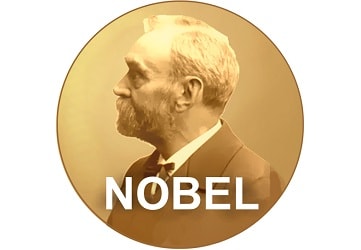 American scientists win Nobel Medicine/Physiology for discoveries about daily bodily rhythms
Three Americans won the Nobel Prize in Physiology or Medicine on Monday for their discoveries about the body's daily rhythms.
This paves the way for opening up whole new fields of research and raising awareness about the importance of getting proper sleep.
Jeffrey C. Hall, Michael Rosbash and Michael W. Young won the 9-million-kronor ($1.1 million) prize for isolating a gene that controls the body’s normal daily biological rhythm.
Circadian rhythms adapt the workings of the body to different phases of the day, influencing sleep, behaviour, hormone levels, body temperature and metabolism.
They were able to peek inside our biological clock and elucidate its inner workings.
Mr. Rosbash is on the faculty at Brandeis University, Mr. Young is at Rockefeller University and Mr. Hall has been associated with the University of Maine.
The winners have raised "awareness of the importance of a proper sleep hygiene.
Period Gene: Know More American scientists win Nobel Medicine/Physiology for discoveries about daily bodily rhythms
Three Americans won the Nobel Prize in Physiology or Medicine on Monday for their discoveries about the body's daily rhythms.
This paves the way for opening up whole new fields of research and raising awareness about the importance of getting proper sleep.
Jeffrey C. Hall, Michael Rosbash and Michael W. Young won the 9-million-kronor ($1.1 million) prize for isolating a gene that controls the body’s normal daily biological rhythm.
Circadian rhythms adapt the workings of the body to different phases of the day, influencing sleep, behaviour, hormone levels, body temperature and metabolism.
They were able to peek inside our biological clock and elucidate its inner workings.
Mr. Rosbash is on the faculty at Brandeis University, Mr. Young is at Rockefeller University and Mr. Hall has been associated with the University of Maine.
The winners have raised "awareness of the importance of a proper sleep hygiene.
Period Gene: Know More
- The awardees’ work stems back to 1984, when Mr. Rosbash and Mr. Hall, who was then also at Brandeis, along with Mr. Young isolated the “period gene” in fruit flies.
- Mr. Hall and Mr. Rosbash found that a protein encoded by the gene accumulated during the night and degraded during daytime.
- A decade later, Mr. Young discovered another "clock gene."
- The paradigm-shifting discoveries by the laureates established key mechanisms for the biological clock.
- Our wellbeing is affected when there is a temporary mismatch between our external environment and this internal biological clock, for example when we travel across several time zones and experience 'jet lag.
- There are also indications that chronic misalignment between our lifestyle and the rhythm dictated by our inner time keeper is associated with increased risk for various diseases.
- That misalignment may be associated with diseases, including cancer and degenerative neurological conditions.
- Circadian dysfunction has been linked to sleep disorders, as well as depression, bipolar disorder, cognitive function, memory formation and some neurological diseases.
- Last year the prize was won by Yoshinori Ohsumi, a Japanese cell biologist who unpicked the mechanisms by which the body break downs and recycles components of cells – a process that guards against various diseases, including cancer and diabetes.
Nobel Prizes- In total, 107 Nobel prizes for physiology or medicine have been won by 211 scientists since 1901, with just 12 awarded to women.
- Nonetheless, it remains the science award with the highest such tally – so far the physics prize has only been awarded to two women: Marie Curie and Maria Goeppert Mayer.
- From 1901 till this year, Nobel prizes have been awarded 579 times to 911 Laureates and organisations with the youngest winner being 2014 Peace Prize awardee Malala Yousafzai of Pakistan at 17 years.
- By winning the Peace Nobel at this tender age along with India’s Kailash Satyarthi, Ms. Yousafzai beat the previous record of Lawrence Bragg, who won the Physics Nobel in 1915 at the age of 25.
- The word “Laureate” signifies the laurel wreath awarded to winners of athletic competitions and poetic meets in Ancient Greece. In Greek mythology, god Apollo is represented wearing on his head a laurel wreath, a circular crown made of branches and leaves of the bay laurel.
- On 27 November 1895, Alfred Nobel signed his last will and testament, giving the largest share of his fortune to a series of prizes in Physics, Chemistry, Physiology or Medicine, Literature and Peace.
- In 1968, Sweden’s central bank Sveriges Riksbank established The Sveriges Riksbank Prize in Economic Sciences in memory of Nobel.
- At the Nobel Award ceremonies on December 10, the Laureates receive three things: a Nobel Diploma, a Nobel Medal and a document confirming the Nobel Prize amount.
- The Nobel Prize amount for 2014 is set at Swedish kronor (SEK) 8.0 million per full Nobel Prize.
Interesting facts- The average age of all Nobel Laureates in all prize categories between 1901 and 2014 is 59 years.
- Most common birthday month of all the Nobel Laureates is June.
- Since 1901, prizes have not been awarded 49 times, most of them during World War I (1914-1918) and II (1939-1945).
- Leonid Hurwicz has the distinction of being the oldest Nobel recipient at the age of 90 for Economics in 2007.
- Till now, 48 women have won the Nobel while two Laureates declined the prize.
- Jean-Paul Sartre, awarded the 1964 Nobel Prize in Literature, declined it as he had consistently declined all official honours.
- Le Duc Tho, awarded the 1973 Nobel Peace Prize jointly with U.S. Secretary of State Henry Kissinger for negotiating the Vietnam peace accord, said he was not in a position to accept the award, citing the situation in Vietnam as his reason.
- Four Laureates were forced by authorities to decline the Nobel.
- Adolf Hitler forbade three Germans Richard Kuhn, Adolf Butenandt and Gerhard Domagk, from accepting the Nobel Prize. They, however, received the Nobel Prize Diploma and Medal later but not the prize amount.
- Boris Pasternak, the 1958 Nobel Laureate in Literature, initially accepted the Prize but was later coerced by authorities of his native country the Soviet Union to decline the award.
- Three Peace Laureates — Germany’s Carl von Ossietzky, Myanmar’s pro-democracy icon Aung San Suu Kyi and Chinese rights activist Liu Xiaobo — were under arrest at the time of the award.
- The International Committee of the Red Cross (ICRC) was given the Nobel Peace Prize thrice while its founder Henry Dunant won the first Peace Prize in 1901.
- Linus Pauling has the distinction of being the only person to have been awarded two unshared Nobel Prizes — the 1954 Prize in Chemistry and the 1962 Peace Prize.
|
▼ FB Group ‘My Delhi Keep It Clean’ gets Swachchta Award for voluntary citizen action [10-3-17]
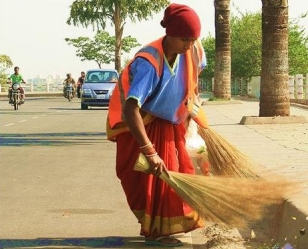 Delhi based citizen group ‘My Delhi Keep It Clean’ gets the award for promoting voluntary efforts to clean public places effectively using Face Book, in the Self-Help Group category.
Fertilizer Cooperative, KRIBHCO was also conferred the Swachchta Award by the Ministry of Housing & Urban Affairs on the occasion of the third anniversary of the launch of Swachh Bharat Mission(Urban) for leading in marketing of compost made from Municipal Solid Waste.
The Ministry awarded 20 individuals and agencies in 7 categories for significant contribution towards furthering the Clean India objective in urban areas.
KRIBHCO has been chosen among the Companies category for marketing the highest quantity of 22,768 tons of compost during 2016-17.
Richmond Park, Gurugram, located in DLF Phase-IV and completed in 2002 has been chosen for the award for exemplary decentralized waste management initiative through waste segregation at source, in the RWAs category.
RWA Federation of Mysuru has shown the way in Zero-waste effluent management system.
Roseland Housing Society, Pune also gets the award for waste segregation initiative.
‘No Food Waste’ initiative of Coimbatore has been selected in the Innovative Practices category for end-to-end cycle to manage and reduce food waste.
Kasturba Gandhi Balika Awasiya Vidyalaya, Ambikar gets the award in the Schools and Colleges category while Swacch Ambikapur Sahakari Samiti has been chosen in Self-Help Group category for women empowerment and livelihood generation by converting garbage into wealth.
Pemayangste Monastery, Gyalshing, Sikkim was felicitated in the category of religious institutions for being a Zero-waste institution. Delhi based citizen group ‘My Delhi Keep It Clean’ gets the award for promoting voluntary efforts to clean public places effectively using Face Book, in the Self-Help Group category.
Fertilizer Cooperative, KRIBHCO was also conferred the Swachchta Award by the Ministry of Housing & Urban Affairs on the occasion of the third anniversary of the launch of Swachh Bharat Mission(Urban) for leading in marketing of compost made from Municipal Solid Waste.
The Ministry awarded 20 individuals and agencies in 7 categories for significant contribution towards furthering the Clean India objective in urban areas.
KRIBHCO has been chosen among the Companies category for marketing the highest quantity of 22,768 tons of compost during 2016-17.
Richmond Park, Gurugram, located in DLF Phase-IV and completed in 2002 has been chosen for the award for exemplary decentralized waste management initiative through waste segregation at source, in the RWAs category.
RWA Federation of Mysuru has shown the way in Zero-waste effluent management system.
Roseland Housing Society, Pune also gets the award for waste segregation initiative.
‘No Food Waste’ initiative of Coimbatore has been selected in the Innovative Practices category for end-to-end cycle to manage and reduce food waste.
Kasturba Gandhi Balika Awasiya Vidyalaya, Ambikar gets the award in the Schools and Colleges category while Swacch Ambikapur Sahakari Samiti has been chosen in Self-Help Group category for women empowerment and livelihood generation by converting garbage into wealth.
Pemayangste Monastery, Gyalshing, Sikkim was felicitated in the category of religious institutions for being a Zero-waste institution.
|